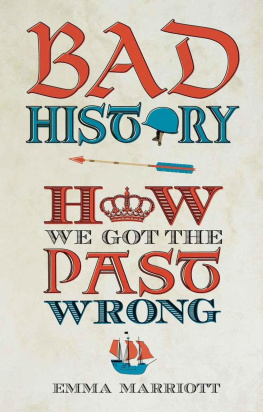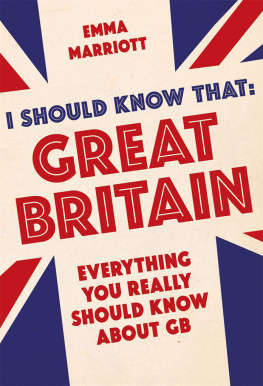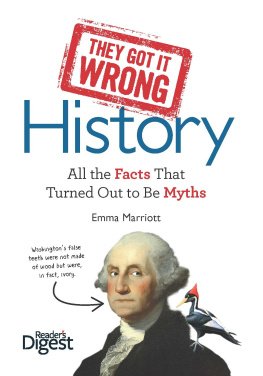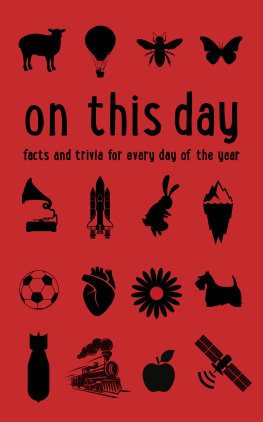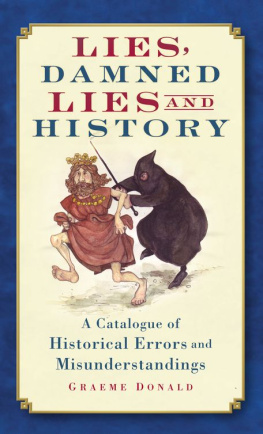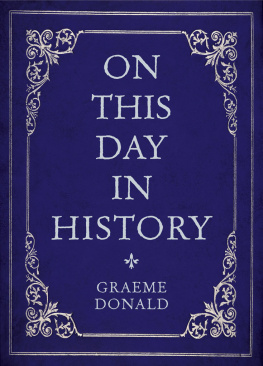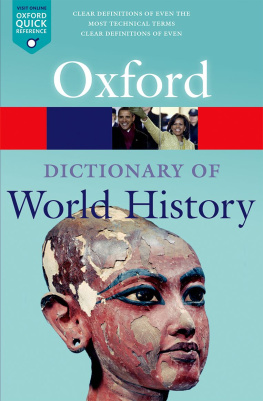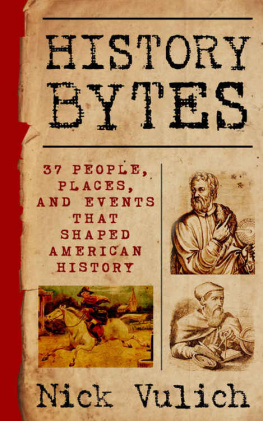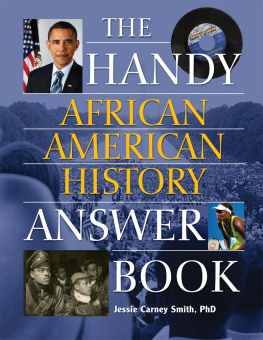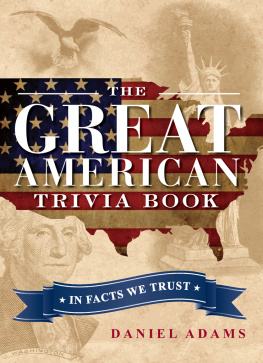
Also by Emma Marriott
I Used to Know That: History

First published in Great Britain in 2011 by
Michael OMara Books Limited
9 Lion Yard
Tremadoc Road
London SW4 7NQ
Copyright Michael OMara Books Limited 2011
All rights reserved. You may not copy, store, distribute, transmit, reproduce or otherwise make available this publication (or any part of it) in any form, or by any means (electronic, digital, optical, mechanical, photocopying, recording or otherwise), without the prior written permission of the publisher. Any person who does any unauthorized act in relation to this publication may be liable to criminal prosecution and civil claims for damages.
A CIP catalogue record for this book is available
from the British Library.
Papers used by Michael OMara Books Limited are natural, recyclable products made from wood grown in sustainable forests. The manufacturing processes conform to the environmental regulations of the country of origin.
ISBN: 978-1-84317-617-6 in hardback print format
ISBN: 978-1-84317-778-4 in Mobipocket format
ISBN: 978-1-84317-777-7 in EPub format
1 2 3 4 5 6 7 8 9 10
Cover design by Ana Bjezancevic
Designed and typeset by www.glensaville.com
Maps and technical drawings by David Woodroffe
Illustrations by Andrew Pinder
Printed and bound in Great Britain by Clays Ltd, St Ives plc
www.mombooks.com
C ONTENTS
I NTRODUCTION

H ISTORY IS A PACK OF LIES ABOUT EVENTS THAT NEVER HAPPENED TOLD BY PEOPLE WHO WEREN T THERE . G EORGE S ANTAYANA
The chronicles of history are littered with myths and legends, misinformation, falsehoods, embellishment, wild exaggeration and a great deal of confusion. And this makes for an awful lot of bad history. As Mr Santayana says, the problem with history is that we werent actually there , and we rely on other people who also werent there to tell us what happened and why. This means that historical facts, like the ones drummed into us at school, are not quite what they seem: the best we can say for a lot of them is that they are probably true, whilst others like Britain was once a fully integrated province of the Roman Empire or Mussolini made the trains run on time turn out to be, well, probably not true.
There are a myriad of reasons why events or people from the past are misrepresented or misunderstood. Archaeological or documentary evidence may be lacking, unreliable or bewilderingly inconsistent (ask ten or twenty witnesses what happened at a particular incident and youll get ten or twenty different versions). Extrapolating what happened at any given event is a tricky business: if you then add in a large chunk of time, be it a decade or several centuries, then some might say its an almost impossible task.
Problems also arise when we wrench something out of the past and examine it out of context. We cant pretend we dont live in the present, and however much we try, modern sensibilities shape our view of history and the conclusions that we draw often speak volumes about our own beliefs. In the last century, Cecil Rhodes was revered as a great Empire builder; now many think of him as a crook and an arrogant bully. Which is it to be? And which is the example of bad history?
History, like life, is annoyingly complex (and confusing); so packaging the past into a neat argument so that it fits some kind of preconceived notion also has its dangers. We liken our historical figures to imaginary characters, and mould them into the comforting stereotypes of hero or rogue. We forget, however, that they were real-life people and, like us, were probably a combination of the good and bad. We much prefer our victories in battle to be resounding and decisive, and not, like many military engagements, muddled, open-ended and inconsequential affairs. Whilst these embellishments make for exciting stories we all love a dashing hero or a thumping victory they also distort the truth, endorse delusions of grandeur and perpetuate many of the myths with which we are so familiar.
Historical myths, like fairy tales, are generally quite harmless but when they are seized upon as political weaponry, the consequences can be disastrous. Repressive regimes can cover up a discreditable past or rewrite the history books with their own sanitized version of events (see Chairman Mao) and propagandists and political leaders can appropriate popular historical myths to lend authority to their own rather dubious belief systems (see the Bismarck myth and Hitler). Conversely, some theorists who are hell-bent on proving some kind of government conspiracy or cover-up can also wander into rather dodgy territory (see the attack on Pearl Harbor).
What follows is an investigation into some of the myths and falsehoods that have become entrenched in popular belief and wrongly influenced our understanding of the world. It is by no means exhaustive there are without a doubt many more myths out there but I hope it goes some way to shedding light on some of the worst offences. Some will disagree with the findings I too wasnt there and, as the historian Pieter Geyl said (at least, I hope he said it), History is an argument without end. But Im hoping that the history passed down to us is not all a pack of lies, that lurking amongst all that bad history lies the truth we just need to keep looking for it.
E MMA M ARRIOTT

T HE A MERICAN O LD W EST W AS A W ILD AND D ANGEROUS P LACE TO B E
Few areas of history have gripped the imagination as much as the expansion of the United States into the wilderness of the West. Sensational tales of the Wild West portrayed a violent and brutal land where hardy settlers rubbed alongside brave cowboys, ruthless outlaws and savage Indians, where people took the law into their own hands to protect themselves and their families.
This image of the Old West proved hugely popular and was consolidated in American folklore, music and dime novels that were published in their millions in the latter half of the nineteenth century. Soldier and showman Buffalo Bill Cody similarly popularized the legend of the frontier land through his Wild West shows. Queen Victoria attended one of his shows at Earls Court in 1867 and wrote in her diary, an attack on a coach and on a ranch, with an immense deal of firing, was most exciting, so was the buffalo hunt, and the bucking ponies, that were almost impossible to sit
In the twentieth century, the legend of the Wild West spread to the rest of the world as artists, magazines and movies spun a whole industry around its mythologization, in which gun-slinging heroes battled against Injuns in places where, as Sergio Leone put it, life has no value. The first Western movie, The Great Train Robbery , came out in 1903 and by the 1950s the genre was also lapped up by US television audiences who by 1959 could choose from no fewer than twenty-six prime-time Western series.
Yet the reality of life in the West was quite different from the general lawlessness depicted in the movies. Recent research has shown that crime was relatively low among the Wests settlers and you were more likely to be gunned down in Victorian London than in the Wild West. In the real Dodge City, which at one point was thought of as the biggest and rowdiest town of the Wild West, a total of five deaths in 1878 amounted to the towns worst year for homicides. Similarly, the legendary shoot-out at the OK Corral, a gunfight between two gangs led by Wyatt Earp and Ike Clanton (and regarded as the most famous gun battle in the history of the Old West) lasted all of sixty seconds and resulted in just three deaths. Face-offs at noon were not common events and gunfights were usually spontaneous and the result of drunken arguments that had got out of hand. The Wild West mythmakers would also have us believe that bank robberies were everyday events, but Larry Schweikart of the University of Dayton has estimated that between 1859 and 1900 just twelve bank robberies occurred along the Western frontier.
Next page
